It’s August, and far too hot except for the shortest of walks, and here’s the shortest walk “Explore” has ever described…..just two kilometres (twenty minutes each way) from Pachia Amos, our “sandy beach” in Paleochora.
Even so, it’s advisable to set off early morning, or in the cool of the evening, and remember to take a bottle of water with you. Preferably go in the evening, returning to the “Jetee Bar” in time enjoy the view out to “the quiet west, the sundown splendid and serene …”
Our destination is the Hones-Millstone quarry, on sea-edge rocks just before Kalamia beach. I’ve known about the site for years, but now a roadside sign indicates its position, and you could reach there by car (and by cheating …) in just five minutes, but let’s walk there instead, it’s healthier.
From wherever you start on Pachia Amos (Sandy Beach) walk along the seashore to reach shallow Limnaki, (“little lake”) at the far end (this is where all of the local kids learn to swim). Continue beyond the wonderful, laid back ‘cantina’, threading a way between and over rocks, and passing (at present anyway) a disgustingly untidy shanty ‘campsite’ – how on earth is this allowed to be here, close to one of the most attractive beaches in Crete*?
Keep close to the sea on a faint path, below a tamarisk tree, to reach a shingle strand, and a little further on to walk over terraces just above sea level. Look carefully – although they are impossible to miss – to see where millstones have been hewn out of the rock, leaving spaces as wide as 50cm diameter. Many more, often smaller, with circumferences cut, are still there.
My friend Costas Liatakis**, an authority on local history, believes these date from the early years of the Venetian occupation (which was from 1204 – 1669), and work possibly continued into the 18th century. The millstones were transported from here (presumably by mule or donkey) to inland villages, and were used for crushing olives to process oil, and for grinding cereal crops to produce flour. Smaller stones – hones – were used for sharpening tools and farm instruments (similar to English ‘whetstones’.)
Costas is unable to explain how these (very heavy) stones were chiselled out and lifted from the rock. Any ideas ?
Whilst you’re here, climb up to the road and look at the rock arches just above. Something easily missed when travelling this way in a car.
Western Crete is very slowly rising (the eastern part dipping), and once (upon a time) the sea reached the foot of these cliffs. A clear “tide-mark” can be seen in several places along the south coast, notably at Cape Krios and west of Sougia, the one-time water-line now 2/3 metres above current sea level.
Return to the coast, and by the same route to Pachia Amos, to enjoy a cool drink at sunset.
* At the time of publishing, it appears that the council have moved these people on.
**If you haven’t been already, do visit Costas’ workshop and studio in Paleochora centre, close to Maria’s greengrocery, and admire his unique crafts in olive wood, stone and ceramics.

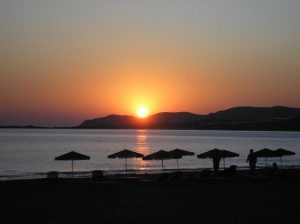
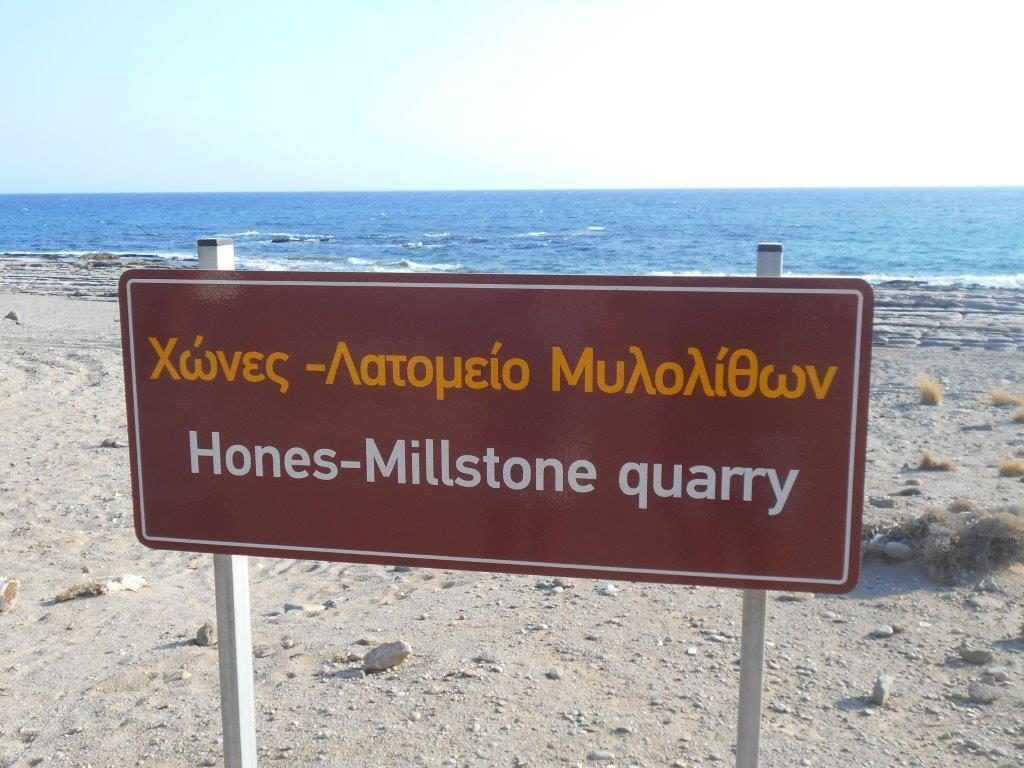
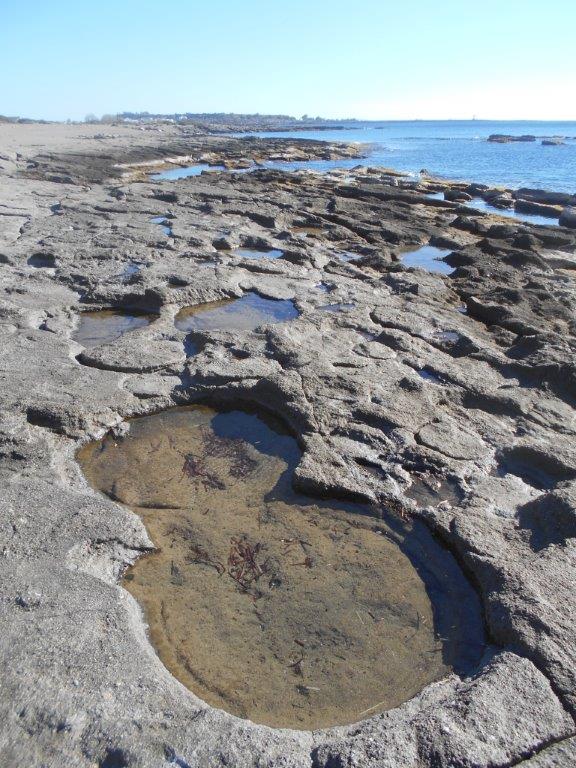

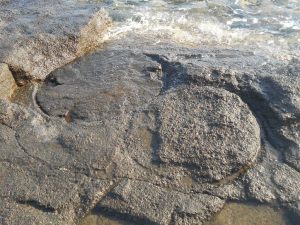
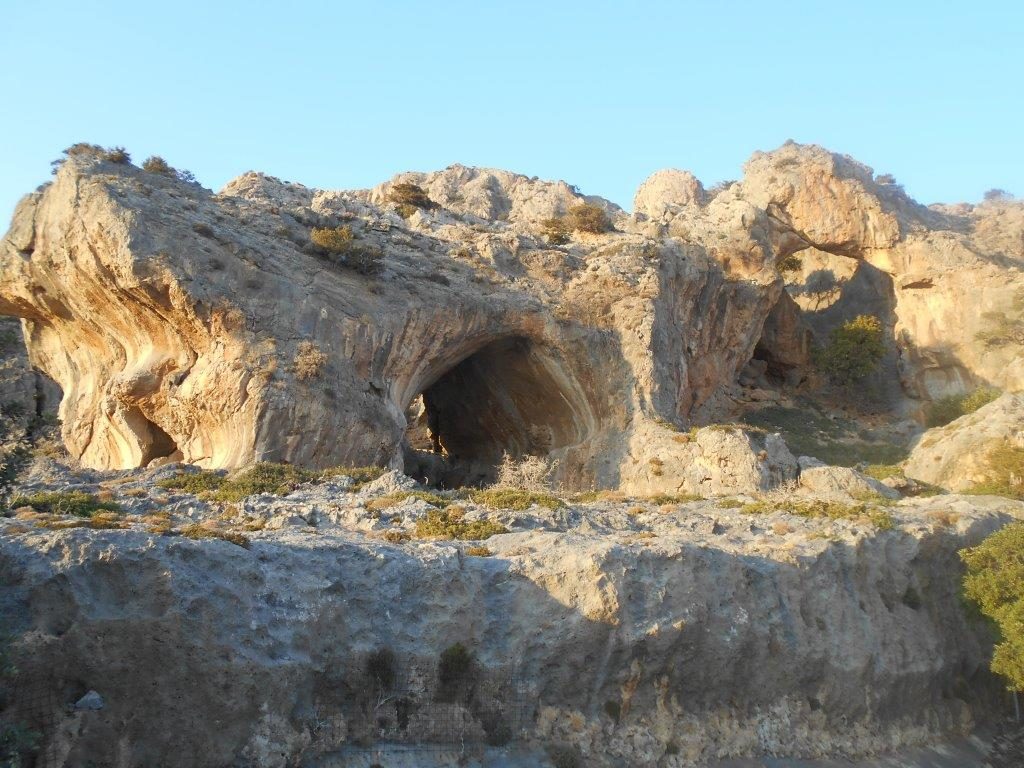
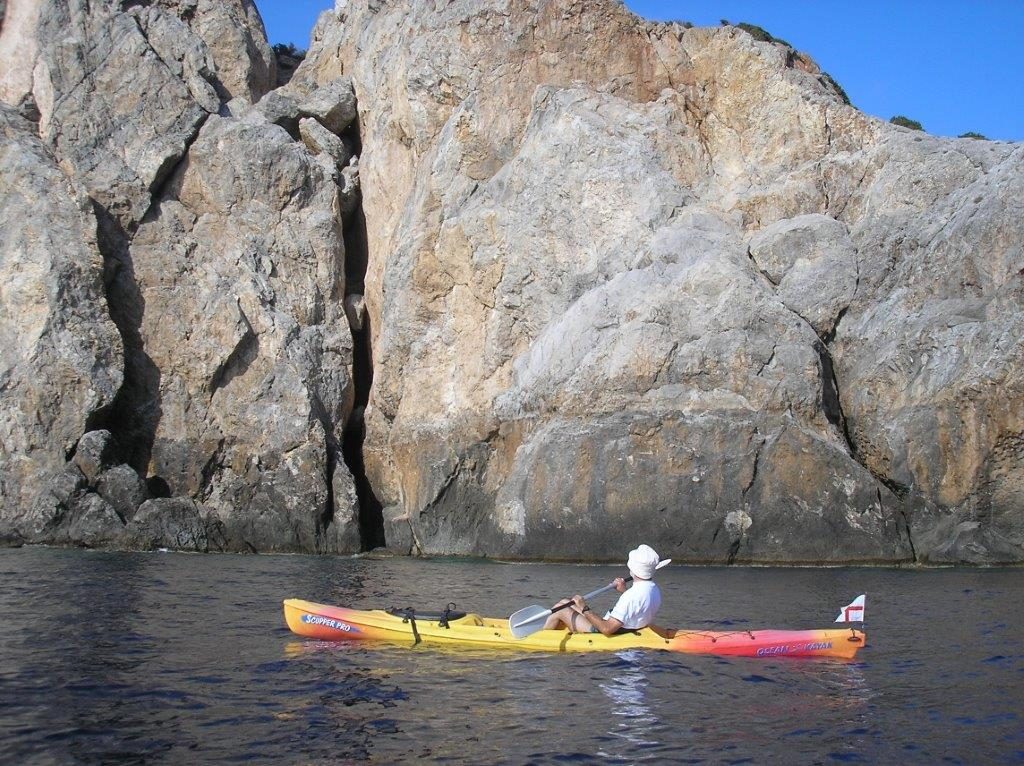
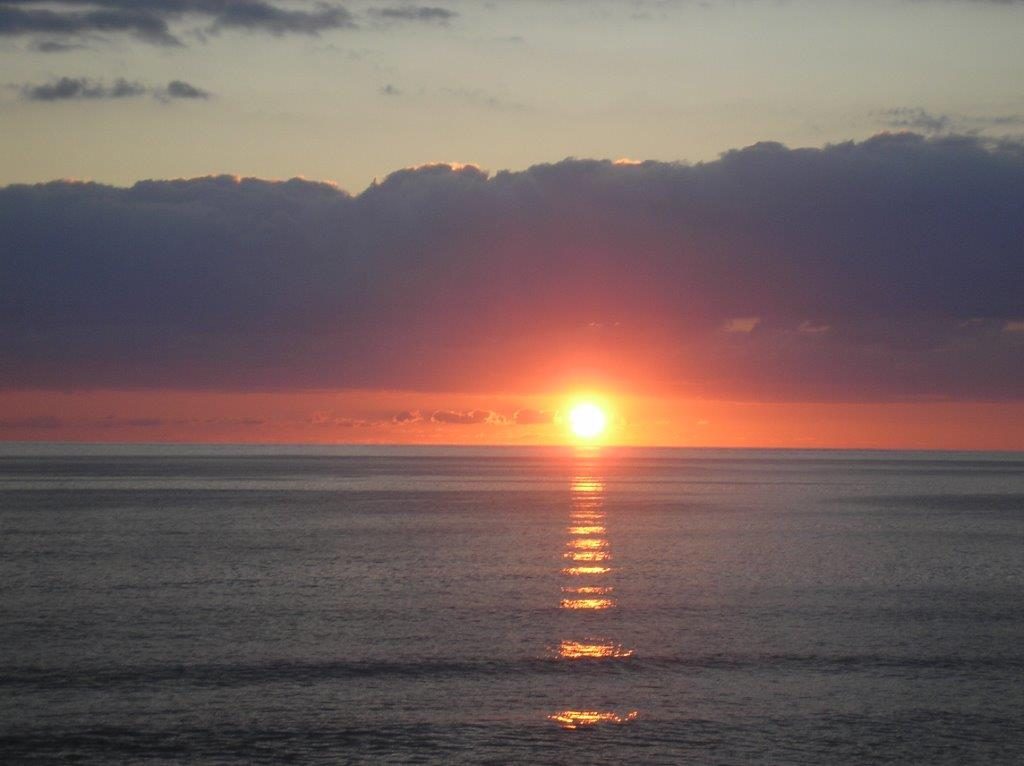

3 comments
Some years ago we stopped and looked at this rocky shore and wondered about the circular cuts in the rock. Now we know. Thank you.
I believe the whole island of Crete was heaved out of the sea by nine metres during the earthquake of 365 AD, when nearly every town on the island was destroyed.
That being so, I have found interesting pottery fragments which can only come from that time as they are several feet below present ground level.
Perhaps Costas knows about this?
https://www.brainyquote.com/quotes/quotes/a/archimedes101761.html
Above maybe explains how the millstones were moved?